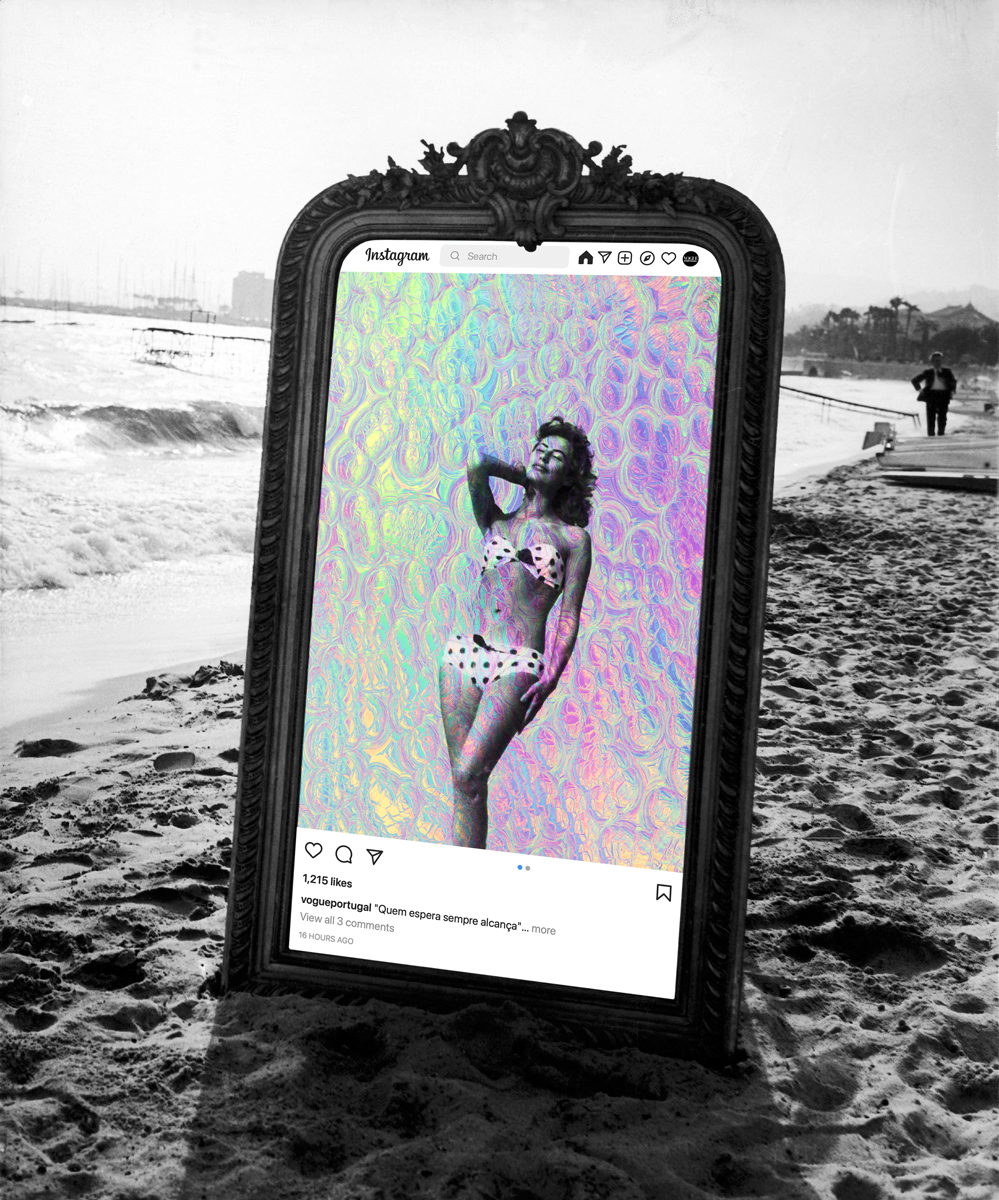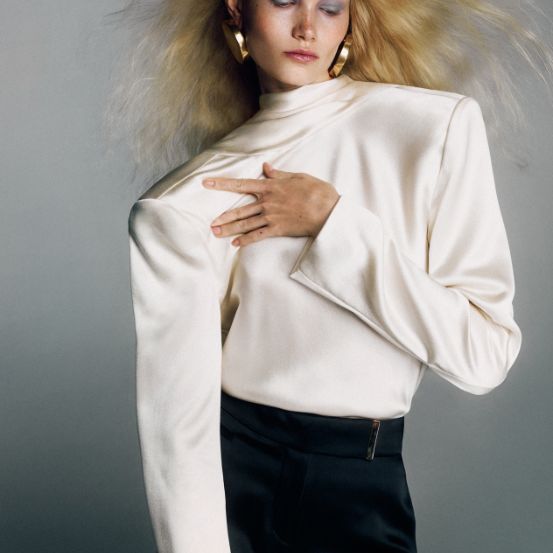What does it take to be a Disney princess these days? Clue: it is not blue blood, nor the ability to understand the chirping of birds. It only takes a smartphone, the rest is history.
What does it take to be a Disney princess these days? Clue: it is not blue blood, nor the ability to understand the chirping of birds. It only takes a smartphone, the rest is history.

It was the year of 2017 when the word "filter" took on a new meaning in this parallel dimension we call Instagram. Until then, using a filter didn't mean much more than changing the colors of a photo when publishing it on this social network. Among the various options there were, for example, the classic black and white filter or the sepia color wash. They were harmless changes, often embarrassingly amateurish (who has ever tried revisiting the first photos they published?) and did little or nothing to change the ecosystem of shared posts. At the same time, on a neighbor platform, a filter was something quite different. It was the possibility to perform a digital transformation in which we briefly acquired the physical features of a dog or gained the ability to spit a rainbow every time we opened our mouth. Filters, according to the latter definition, were introduced by Snapchat in 2015, long before they reached Instagram. Today, few use this social network - Snapchat's popularity and number of users began to decline sharply in 2018 - but the success of "lenses" (the technical name for these filters) was notable from the very first moment. Adults, children, men, women, no one was left indifferent to the launch of this augmented reality system, to the point where photos and videos with filters overflowed Snapchat and began to take the place of Facebook profile pictures, or, as some horror stories tell us, even professional resumes. Perhaps the word "pandemic" is not too out of place to describe the early post-apocalypse days of dog-ears. Little did we know that it was only the beginning.
The first designs released by Snapchat had a common characteristic: their transformations were based on the fantastic, a kind of fantasy that transported users to a parallel reality, where they could be whoever they wanted. It is therefore not surprising that many of its themes were based on scenarios and objects that we typically associate with fairy tales. In 2016, the Daily Mail published a list of the ten most used filters on Snapchat. In first place is the dog filter - there it is, a pandemic - immediately followed by the flower crown filter. In a closely contested third place is a filter that leaves its user surrounded by butterflies, followed by another that lets you adorn yourself with a pink crown. And in fifth place, a filter that can turn anyone into Bambi. Basically, you could put all these photos and videos together and make a live action version of Snow White, and no one would notice the difference. We might have thought that the fall of Snapchat meant that filters were just a passing trend, but the truth is that, unlike the social network itself, this creation is here to stay. We have already mentioned that the same type of technology was adopted by Instagram in 2017 and that is where, today and in recent years, filters have been thriving. As it happened later on Snapchat, it's not just social media professionals who have the ability to produce and publish filters on Instagram. Everyone can do it, as long as they have the ability to do it. With a little imagination (and some technology) thousands and thousands of augmented reality filters are born every day, and some even manage to going viral, gathering a significant set of users. That's what happened in 2020, when Paige Piskin, now an augmented reality technician at Meta, launched a filter that appealed to the nostalgia and unshared dreams of a considerable number of adults: turning them into cartoons.
“As an AR [augmented reality] artist I saw a huge demand for fun and creative character filters (...) and started working on a anime character style filter,” explains Piskin in a statement posted on her LinkedIn page. "I launched my filter on Monday and within 10 hours it had amassed over 25,000 shares and the following day another 170,000. By the second week, this filter has gained close to a billion impressions and 10 million shares - I've been tagged in stories, reels, tiktok videos, feed posts from people all over the world who have been telling me it's their favorite filter." Paige Piskin goes on to say that she was even approached by other creators, who took her idea and elevated it to new heights. Soon after, we began to see some of our favorite cartoons pop up in Instagram stories: from filters that shape your face into unforgettable Bratz features to technology that turns you into an anime character, there's something for everyone.
I admit that the first time I came across a cartoon filter I was as scared as I was amazed. Suddenly, people I knew from my everyday life had been transformed into Disney characters, with bulging eyes, textureless skin, and a certain magical glow illuminating their outlines. It was a vision too ethereal, in a setting too familiar. Almost as if they were unraveling the mystery behind a magic trick, they were taking features I associated with my happy childhood days and taking away the surprise, the wonder that comes with believing in something enchanted. And so, in my mind there was only one question: "Why?" Why do so many people make it a point to grab their smartphones, open the camera, and put on a filter that temporarily makes us acquire the features of a Disney princess? That was my question, and I tried to find an answer. I tried in English and in Portuguese. I tried with complete sentences - why do people use Disney filters - and I tried with keywords - filters; Disney; Instagram - I tried a thousand and one ways, and even then my valuable source of knowledge (I mean, the search engine) only offered me pages and pages of articles with titles that didn't vary much from each other. "How to use Disney filters," "Where to find the filters that make you look like a princess," "Everything you need to know about the filters that turn you into a cartoon." But no one would explain to me why. So I decided to do my own research.
To talk about trends emerging within this digital dimension, you have to talk to the people who live in it regularly, and that's what I did. I gathered my introverted Internet-person courage and did a simple poll on Instagram stories - for obvious reasons, the following data is not advised to use for academic purposes. Of the 153 people who participated in the poll, the vast majority (87%) had never shared a story in which they used a cartoon filter. However, when the question focused on who had ever used the filter, even if they had not posted the final image, the results were reversed. The majority (52%) have played with this augmented reality technology, but simply choosing to keep that moment to themselves. And the reasons? They are varied, but we were able to divide them into two broad categories. One is to satisfy curiosity. After all, it's not every day that we are given the opportunity to transform ourselves into the characters we idolized in our childhood, so even if the intention is not to share our experience with the world, experiencing this enchanting filter is like fulfilling a long-standing desire - the one we used to express next to the TV, while living the adventures of our imaginary companions as if we were right there with them. The other reason is disappointment, because magic fades when it becomes something so simple to achieve. The testimonies explained how the image was too unreal, manufactured and removed the various facial features that make us unique to give origin to a collection of people without any individuality.
This was all supposed to be just a joke, a little moment of fun. But there is always something deeper behind any big trend - and perhaps the same reason that makes someone want to try on the features of a Disney princess has, in other people, the opposite effect of making them hesitate at such a transformation. We grew up watching these characters, and to a great extent they have impacted the image we have of ourselves, as well as the one we think we should have. If we remove nostalgia from the equation, what are we left with? A filter that makes our faces thinner, that turns our mundane brown eyes into a heavenly blue, that removes acne, scars and pores in a way that no skincare product ever will. That's why it's a moment of magical transformation: not because we imagine ourselves in the role of Snow White dealing with seven grumpy dwarves, but because deep down we still wish our name was the one that sounds in the Wicked Queen's mirror when she asks who is the fairest of them all. And when the filter fades, there remains the camera showing us our reality. Beauty can be an integral part of the story of any fairy tale, where often the princess wins not by her deeds, not by her merit, but by her looks, and this may have led us in the wrong direction. Filters are temporary, only learning to accept our reality is forever. And, who knows, what we were missing to live a happy ending.
Translated from the original on The Fairytale Issue, from Vogue Portugal, published May/June 2022.Full stories and credits on the print issue.
Most popular


Relacionados
.jpg)


LightHouse Publishing x Street Smash Burgers: uma noite no escritório da Vogue Portugal
19 Dec 2025
 (14).png)


